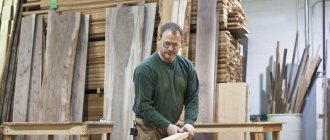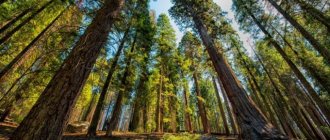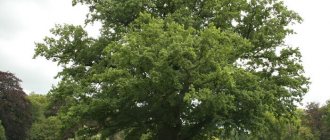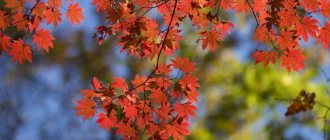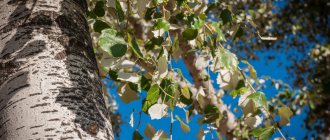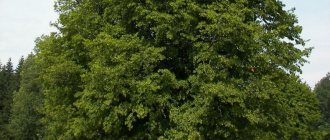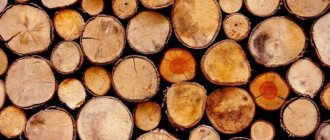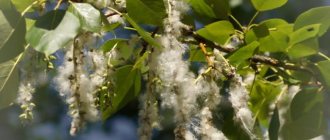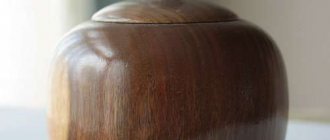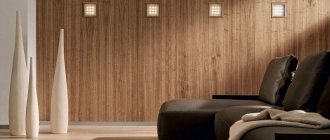We are all accustomed to the fact that we traditionally decorate a Christmas tree for the New Year. Without this ritual, the holiday no longer seems like a holiday. Plus, the tree itself creates the right atmosphere. However, what do we really know about spruce, besides its decorative properties? In reality, not so much.
We are often accustomed to drawing in our heads the image of a very specific spruce with a recognizable crown. As a rule, it is green, although it can be gray-blue, with a fluffy silver crown. But in reality there are different types of fir trees. Much depends on the area where it grows.
Common spruce: what are we talking about?
In Russia, as well as in a number of CIS countries, common spruce is common. Officially it is called European. The plant also has a name in Latin: Picea abies Excelsa. This is the most popular variety in our latitudes. According to the classification, it is a coniferous plant, genus - spruce, family - pine.
This culture is distinguished by a recognizable characteristic form, which has long become a symbol of the New Year, Christmas and winter holidays in general. Spruce feels good in the northern regions, which is why this tree has taken root so well in Russia. As a rule, it has a rather lush green crown, and the spruce usually does not require any special care. For personal plots, this option is optimal for decoration. Since the plant is evergreen, it is often purchased to add color to the area during the cold season.
Seedlings in Russia are distributed through special nurseries. Sometimes young plants are offered to be bought second-hand, but this is not worth the risk: they may sell you a diseased or severely weakened plant, which will later cause many problems. And even with the most careful care, you will not have guarantees that it will definitely take root.
Classification
Taxonomy
Type Norway spruce
is included in the genus Spruce (
Picea
) of the Pine family (
Pinaceae
) of the order Pine trees (
Pinales
).
| 6 more families | from 27 to 55 more species | ||||||||||||
| order Pine | genus Spruce | ||||||||||||
| Coniferous department | Pine family | species: Norway spruce | |||||||||||
| three more extinct orders | about 10 more births | ||||||||||||
Varieties
Siberian spruce ( Picea obovata
), growing in the Urals, Siberia and the Far East, is sometimes considered not as an independent species, but as a variety of Norway spruce Picea abies subsp.obovata.
Varieties
During the selection process, many varieties were developed, some of them: [ source unspecified 760 days
]
- Acrocona
. Slow growing variety. The trees reach a height of 23m, the crown is wide and conical, with a diameter of up to 4m, the branches are located horizontally. The appearance is quite decorative, especially in spring (at this time of year, small red cones grow at the ends of young shoots) - Cupressina
. The variety was bred in Germany at the end of the 19th century. Nowadays this variety is very popular among gardeners in various countries. The needles are dark green, the crown is narrow and conical, the tree reaches a height of 1.8 m and a width of 0.6 m. Such compact sizes protect mature trees well from damage to branches during heavy snowfalls - Crusita
. Decorative variety, but very rare. A peculiarity of this species is the unusual coloring of the young shoots, which have a reddish tint. But as the tree matures, they become green. - Echiniformis
. Known in culture since 1875. Nowadays it is almost never found in its pure form. Usually mixed with 'Gregoriana' or 'Gregoriana veitchii'. Dwarf, slow-growing form. In 30 years, the tree reaches 20cm in height and 40cm in width. The shape of the crown is rounded to cushion-shaped, dense and uneven. The shoots are light brown, glabrous, slightly shiny. Annual shoots are uneven and flattened. The buds are light brown, large, cylindrical with a round end. The sheet roller is flat. The lower needles are 1215 mm long, 11.25 mm thick, rhombic in section, flat. The upper needles are star-shaped. Spruce trees of this form prefer areas with little shade. - Glauca Pendula
. The branches are spreading, densely strewn with dark green needles. The variety is particularly unpretentious, so it is very widespread. - Inversa
. The peculiarities of this variety are an unusually narrow columnar crown, which is formed by hanging branches, as well as young shoots that are bright pink in color. - Little Gem
. Dwarf variety, very slow growing. The height of spruce trees of this variety is up to 0.30.5 m. The crown has a spherical or pillow-shaped shape, up to 1 m wide. Mainly used for alpine gardens. - Nidiformis
. A dwarf variety with an interesting crown shape. Reaches a height of 1.21.3m. The crown is very wide, nest-shaped, up to 5 m in diameter. It is distinguished by very high endurance to unfavorable growing conditions. It is used both in single plantings and in rock gardens. - Ohlendorffii
. Dwarf shape, height 68 m, crown diameter 2.54 m, at a young age the crown is rounded, in old age it is broadly conical with several peaks. The shoots are erect and spreading, unevenly developed, densely located in the crown. Annual growth is 26cm. The buds are dark, orange-brown, and are found in groups at the ends of the shoots. The needles are golden-yellowish-green, short, prickly, and outwardly resemble the needles of oriental spruce. Obtained from seeds in the nursery of T. Ohlendorff near Hamburg in the middle of the 19th century. The seeds were brought from the Nikitsky Botanical Garden. Propagated by seeds and cuttings (rooting rate about 24%). Does not tolerate stagnation of water, salinity and dry soil. Shade-tolerant. Recommended for single and group plantings. - Pendula
. Rare, very decorative and unpretentious variety. The crown has a rather original shape, mainly due to the elasticity of the branches, some of which grow to the ground. - Pumila Glauca
. The main feature of this variety is the very beautiful needles of a bluish tint. Young spruce trees have a rounded crown, which becomes spreading with age. - Reflexa
. Decorative variety with a pyramidal crown; They acquire this shape due to upward-pointing branches. - Tompa
Leen Konijn.
The variety was introduced by Konijn Nurs. Ederveen in 1987 in the Netherlands. Dense conical shape (6040 cm). Slow growth. The needles are light green. Resembles Picea glauca
'Conica', but is not as susceptible to spider mites and aphids[7]. Dimensions at 10 years: height 0.6 m, diameter about 1 m[8], final height up to 1.5 meters[9]. - Wills Zwerg
(syn. 'Wills Zwerg'). The variety was discovered around 1936 in the nursery of Hans Will (Aspern near Barmstedt, Holland). A low-growing form, by the age of 30 it reaches a height of 2 m. The shape of the crown is uniform, densely pin-shaped. With age it becomes more loose. It is interesting due to the light green needles on young (July) shoots, much lighter compared to the old dark green needles[10].
Why are spruces planted?
In Russia (and not only) there are entire spruce forests that were specially created by man. And despite the fact that this plant has long been strongly associated with the New Year, it is also very useful for a number of reasons:
- This plant is unpretentious. It easily takes root in different soils and can grow both in the light and where it is dark.
- The spruce trunk reaches 60 cm on average, and sometimes can reach up to 1 meter (depending on the species). At the same time, it reaches a height of up to 50 meters. This allows this tree to be used to produce boards and other materials.
- The dwarf breed is perfect for solving decorative problems.
- A tall spruce on a personal plot can become an excellent barrier against dust and noise. This is especially important in cases where the house is located far from the main road.
- Spruce does not require special care. It is also useful in medicine.
Below we discuss in more detail the main uses of spruce. This allows you to better understand how important this plant is.
3) Orally describe each tree according to the plan:
e) Features of cones.
Let's describe these trees according to plan:
Description of the Spruce tree according to plan for 1st grade
Spruce . Coniferous tree. Tall and slender. The branches grow very densely, shortening towards the top. The needles are short and stiff. The cones are elongated and dense.
Description of the Pine tree according to plan for grade 1
Pine . Coniferous tree. Tall, wide-legged. The branches are long and thick, grow sparsely, and form a wide crown. The needles are long, paired, soft. The cones are short and open.
Spruce for industry
Spruce has a soft and at the same time light wood, which can be easily processed both manually and with various tools. It has a relatively low (at least compared to other pine) degree of resin. And at the same time, spruce wood has a high (in percentage) cellulose content. As a result, thanks to all the listed features of the tree, spruce is optimally suited for making paper.
Spruce is also an excellent option for creating furniture, poles, containers, sleepers, and musical instruments. It is great for woodworking at home, that is, by hand.
The bark of young trees contains large quantities of tannins. The extraction of these substances is necessary for the leather industry. Resin is also extracted from spruce. It is needed to obtain wood vinegar, turpentine and rosin.
What are the benefits of spruce in medicine?
Not everyone understands how important spruce is for medicine. However, the cones of the common spruce are used as medicinal raw materials. For these purposes, they need to be collected even before the seeds ripen, that is, in the summer. The cones contain tannins, resins and essential oils.
Ascorbic acid can be obtained from pine needles. Kidney infusion is also very useful. It has a desensitizing effect, relieves spasms, and inhibits the activity of many pathogens. Both infusion and decoction of cones are used to maintain normal functioning of the respiratory tract. These remedies are especially good for bronchial asthma.
The needles can also be used to prepare infusions that effectively treat scurvy. At the same time, the absorption of necessary microelements from infusions is much better than from most pharmaceutical preparations. In folk medicine, pine needle baths are also indicated for attacks of rheumatism.
Gardening and landscaping
Common spruce is quite actively used in urban landscaping. This plant withstands smog and increased amounts of harmful substances in the atmosphere. Thanks to the lush needles, it actively traps dust and dangerous gases and reduces the amount of noise on the streets. Spruce trees are also used as snow-protective plantings, allowing savings on cleaning routes.
Spruce has found the widest application in landscape design. This plant has excellent decorative qualities. At the moment, a large number of different varieties have been bred, which differ in the size of the crown, the shade of the needles, as well as their crown. And while some have a very persistent and bright recognizable aroma, others will have a weak and delicate aroma.
Popular message topics
- Circulatory system
A complex system of organs, the function of which is the constant circulation of blood throughout the body, is called the circulatory system. It is part of a larger vascular system. Along with the circulatory system, the vascular system also includes the lymphatic system. - Flying squirrel
The flying squirrel is a record holder for long jumps, living throughout Eurasia. Appearance of the animal. She is very similar to an ordinary squirrel, has a small muzzle, large black eyes that help her see well in the dark), - Calendula plant
Calendula is one of the brightest representatives of herbaceous plants. A convenient place for its growth is the sea coast. Calendula also grows freely on rocky surfaces and in bushes.
The tradition of decorating a fir tree for the New Year
Many countries have a recognizable tradition of decorating a spruce tree for the New Year. There is a lot of advice on how to choose such a spruce, how best to install it, what needs to be done to prevent the needles from falling off longer. It is noteworthy that in Russia, ordinary spruce is most often used for these purposes. However, if you look into the question, there is nothing surprising in such a decision, since this tree is typical for the CIS and is found everywhere. It is also usually the cheapest to purchase.
As Norway spruce grows, it acquires branches that individually can resemble small trees. This feature is often used by sellers at spruce markets. They cut large trees into pieces and then sell them by branches. As a result, sellers increase the likelihood of selling more of the goods, and buyers get the opportunity to save money. Plus, in small apartments, massive spruce trees do not always look appropriate. Therefore, branches are most often taken.
It should be noted that there is a fairly popular misconception that you cannot buy food for the New Year, as this will lead to massive cutting down of plants. In fact, nurseries and even forestries get rid of the weakest plants in this way. They can be perfect for the New Year if they are still in excellent condition at the time of cutting down. They will look great.
However, experienced specialists see that such a tree may have some flaws, for example, in the root system, which will not allow it to fully develop and grow further. That is, such a tree would not have become part of the forest ecosystem in any case.
Also, spruce trees are often cut down for the New Year, which would still have to be gotten rid of one way or another as part of thinning. What are we talking about? The fact is that spruce seedlings in the first years of life are very fragile and painful. They can wither away from parasites, fungus, etc. Therefore, it is customary to plant a large number of seedlings in order to obtain the required number of trees in the future.
However, often everything takes root. Young Christmas trees begin to actively develop and stretch upward. But there's no room for everyone. Therefore, specialists who work in forestry have to deal with a task planned in advance - thinning. As a result, some of these trees end up at New Year's bazaars.
Also, do not forget that many nurseries specially plant fast-growing varieties in order to make money on this holiday. That is, this is the implementation of trees that were originally intended for the New Year. Therefore, if you start boycotting Christmas tree bazaars, then no one will plant such plants. Consequently, there will no longer be any more spruce in the forest.
In a word, when buying live spruce you do not harm the ecosystem. True, only if you purchase a New Year's tree from a nursery or from a seller who officially cooperates with them. On New Year’s Eve, “enterprising individuals” regularly appear who want to cut down spruce trees and make money from it. And so they can cut down healthy trees and touch those parts of the forest that do not need thinning. That is, really harm the ecosystem. Therefore, there is no need to encourage barbaric logging or buy anything from people who cannot provide documentary evidence of the legal origin of the trees.
The best option now is to buy a plant from an online store that cooperates with nurseries. You don’t have to go anywhere and, moreover, think about how to deliver a magnificent beauty home. After all, it often won’t fit inside the car. And even if you try to put it there, there is a risk of damaging the covers. In a word, it is best to entrust delivery and everything else to specialists.
Literature
- Plant life. In 6 volumes / Ch. ed. Al. A. Fedorov. M.: Education, 1978. T.4. Mosses. Moss mosses. Horsetails. Ferns. Gymnosperms. Ed. I.V. Grushvitsky and S.G. Zhilin. P.361364. 447p. 300,000 copies
- Ukhanov V.V.
Rod 7. Larix Mill. Larch // Trees and shrubs of the USSR. Wild, cultivated and promising for introduction. / Ed. volumes S. Ya. Sokolov and B. K. Shishkin. M.L.: Publishing House of the USSR Academy of Sciences, 1949. T.I. Gymnosperms. S.165170. 464s. 3000 copies - Gubanov I.A.
etc. 44.
Picea abies
(L.) Karst.
[ P. excelsa
(Lam.) Link] Norway spruce // Illustrated guide to plants of Central Russia. In 3 vols. M.: Scientific T. ed. KMK, Institute of Technology. research, 2002. T.1. Ferns, horsetails, club mosses, gymnosperms, angiosperms (monocots). P.119. ISBN 8-87317-091-6
Interesting facts about spruce
The common spruce seems a little boring and a well-known plant that cannot surprise us with anything. However, in reality this is not the case:
- The tree is most firmly connected to the earth for the first 10-15 years. But after this period, the main root of the common spruce dies. It feeds from lateral roots, which begin to spread across the soil. However, they don’t dig deep into it. In this regard, spruce trees are poorly able to cope with hurricanes. So a lonely tree can even be knocked down by a sudden squall.
- On average, a tree lives up to 250-300 years. However, some specimens live up to 600. And scientists still have not found an exact answer to the question of the reasons for this difference.
- Typically a mature tree reaches 50 meters in height. But the oldest specimens can grow up to 100 meters.
- Next to the mother tree, new ones often grow from its roots. The young trees are exact clones of the previous tree. In Sweden there is a spruce tree that has been “reproducing” in this way for 9.5 thousand years. In fact, it can be considered the oldest living organism on earth.
- The total number of spruce varieties in 2022 is more than a hundred. And at the same time, 90% were bred by collectors, and the main difference concerns appearance. Wildlife does not need such a variety of spruce trees. The main species is resilient enough to adapt to different conditions without significant changes.
- Scientists are still debating whether the common Norway spruce, a tree that grows in the Balkans, and the Siberian spruce can be considered the same species. Most people think so.
- In spruce wood, the fibers are distributed surprisingly evenly. This is what ensures the clear sound of instruments made from this material. It is worth noting that without spruce the history of the development of music would definitely be different.
- Young needles contain more vitamin C than any lemon.
- Without pine needles, it would be difficult to tan leather in many regions of the planet.
- Due to the fact that spruce is an evergreen tree, many people think that it does not renew itself in the fall. However, it is not. Every autumn, the spruce sheds about 15% of its needles. Then the needles grow back in the spring. That is, this tree also has an update cycle. It’s just slightly different from what is observed in deciduous plants.
- The taiga consists of 70% spruce trees of various types.
- Not everyone knows that spruce wine exists. However, it was once indispensable for sailors and allowed them to fight scurvy on long voyages.
- Blue spruce trees were brought to Russia from North America.
- Spruce releases volatile substances that purify the air and kill pathogens.
- The feeling that it is easier to breathe in a spruce forest did not arise out of nowhere. And it is not even associated with microbes. It’s just that in such a forest there is always less dust in the air thanks to the needles, which trap everything.
As you can see, the common spruce is objectively a very useful plant. And a person needs it not only in connection with the New Year. Although the associations with this holiday have become firmly established, they are, of course, very strong. But now you know why you need to buy spruce from nurseries or online stores that cooperate with them.
Botanical description
Norway spruce is a slender evergreen coniferous tree. Height: 30-50 m. The root system of common spruce is superficial.
The trunk is covered with gray, brownish-gray bark, which peels off in thin scales in old trees. Norway spruce trunk diameter: up to 1 m. The crown is regular, cone-shaped, reaching down to the ground. The branches of Norway spruce are drooping or prostrate, arranged in whorls.
The needles are needle-shaped, tetrahedral. They grow separately from each other, densely adjacent to one another. The arrangement of Norway spruce needles is spiral-shaped. Color: dark green, shiny. Length: 1-3 cm. The lifespan of each needle of a common spruce is 6-12 years. Then they are replaced.
Norway spruce is a monoecious tree: male (spikelets with pollen) and female (cones) fruiting organs simultaneously develop on one plant.
Spikelets with pollen are axillary, consist of anthers collected together, surrounded by scales at the base. They are located at the ends of last year's shoots, in the lower part of the crown. Common spruce pollen color: yellow.
The cones of the common spruce are oblong, formed by spirally arranged covering scales. They appear at the ends of two-year-old branches, closer to the top. At first they grow vertically, then as they grow they gradually turn their tops down and thus become drooping. Length of mature cones: up to 15 cm, width: 4 cm.
Norway spruce seeds are similar to pine seeds, ovoid-pointed. Color: dark brown. Equipped with a reddish-brown lionfish. Length: up to 4 mm.
Flowering time for common spruce: May. The seeds ripen in October and remain in cones until mid-winter. In January-March they disperse.
Seed production begins at the age of 20-60 and is repeated every 4-5 years. The lifespan of the common spruce is 250-300, up to 600 years.
Reproduction of common spruce: seeds.
